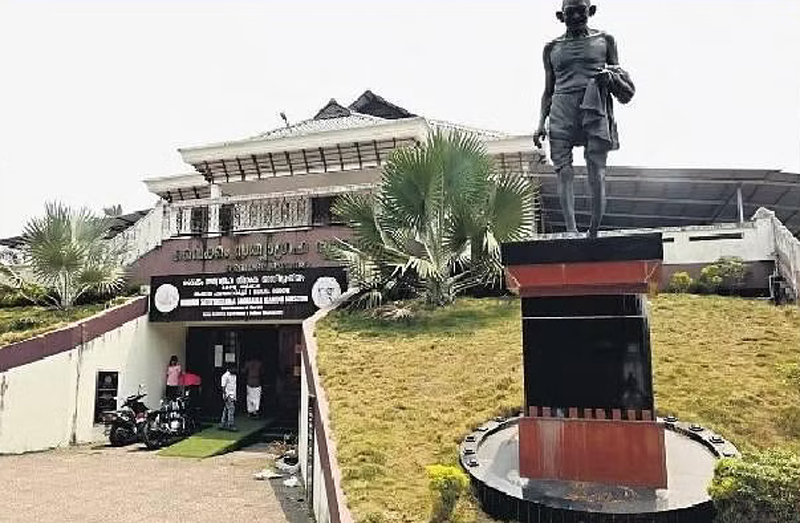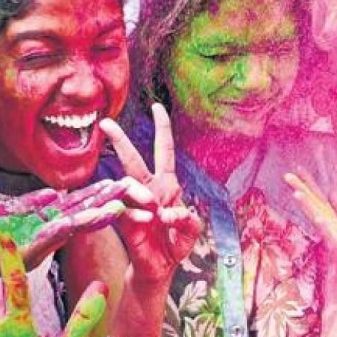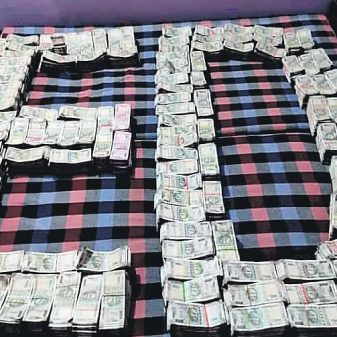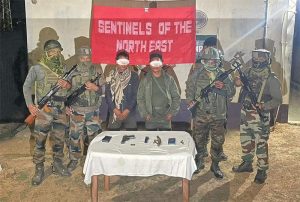
Dr Jayaram Poduval
Social activists like TK Madhavan understood the importance of breaking this last bastion of caste society in each village of Kerala.
March 30 this year initiates the centenary of Vaikom Satyagraha which had a long-lasting impact on Kerala’s socio-political scenario. Many are responsible for the success of the temple entry movement, which envisioned a radical change in social, religious, political and cultural realms. The caste system, the foundation of Kerala’s social structure before the 20th century, started shaking as soon as the century began. Educational augmentation of the distressed classes through secular establishments the colonial institutions instituted and the works of social, religious and political activists and reformers gave a new direction to progressive thinking. However, temples stood as the relics of the old system sustaining the caste system in the guise of retaining tradition. Unlike other structures, temples architecturally defined the caste system. Social activists like TK Madhavan understood the importance of breaking this last bastion of caste society in each village of Kerala.
TK Madhavan can be considered the main force behind the Temple Entry Movement. He gave a speech in the Sri Moolam Praja Sabha in 1904 when only 17 about the atrocities of untouchability. He was the first to raise the issue of temple entry in the public domain through the editorial of Deshabhimani in 1917. Through his efforts, the SNDP Yogam [a socio-religious movement initiated by Sri Narayana Guru], in its annual meeting held in May 1920, resolved that “All public temples belonging to the Government should be open to all Hindus regardless of Caste”. He also successfully linked the issue of untouchability with that of the national movement for freedom and equality.
Madhavan met Mahatma Gandhi at Tirunelveli in 1921 and informed him about the disabilities of the Izhava community, sought his advice on the proposed temple entry movement and the support of the Congress party. Robin Jeffrey quotes about the interview details thus, “I would ask you,” Gandhi began, “to drop temple entry now and begin with public wells. Then you may go to public schools.” Madhavan quickly corrected him: “You seem to mistake our position in society for something analogous to that of the untouchables in British India. Except for half a dozen schools… all public schools in the state are open to us.” Gandhi replied: “You are ripe for temple entry then.” Gandhi added that the Kerala Provincial Congress Committee [KPCC] should take up the issue. Soon Madhavan returned to Gandhi with KP Kesava Menon, Secretary of the Travancore Congress Committee, at the Kakinada Congress Session in 1923. The session passed a resolution inaugurating a national campaign against untouchability. The KPCC chose K Kelappan, a Travancore-based Malabar Nair, as the convener of the Anti-Untouchability Committee. The timing of the resolution was crucial as Kerala could join the pan-Indian movement against caste atrocities and the quest for caste identity like the “Ad-Dharm movement in Punjab; the movement under Ambedkar in Maharashtra; the Nama-Sudra movement in Bengal; the Adi-Dravida movement in Tamil Nadu; the Adi-Andhra movement in Andhra; the Adi-Karnataka movement; the Adi-Hindu movement centered around Kanpur. More than a caste-based agitation, the Temple Entry Movement shaped into a nationalist movement for civil rights. It was a strategically taken decision by leaders like TK Madhavan, who explained, “I think it is a common perception that the Temple Entry Right and the movement is solely for the right of avarnas to enter the temple and worship God. Indeed, earning would be part of the Temple Entry Right, but that is not the prime and only goal of the Temple Entry Right or the movement. Temple Entry Right is the ethical right with religious and political facets”.
The Indian National Congress, leading the freedom movement, had to address the issue of untouchability seriously as the lower castes’ support was tilting towards the ‘good’ governance of the British in areas like Anjengo and Malabar. The lower castes did not find the racial discrimination of the British any different from the prevalent caste segregation. Congress took this opportunity to gather the support of the lower castes in Kerala and bring them into the nationalist movement, which till then was considered an upper-caste struggle for power. “The rebellion against the ideology of old Kerala society gained legitimacy from the adoption by the Indian National Congress of M K Gandhi’s programs of social reform”, observes Robin Jeffrey.
The Vaikom Satyagraha movement of 1924-25 started on March 30, 1924 with active support nationwide. The Akalis offered langar for the Satyagrahis. The Malayali diaspora living in Malaya and Singapore offered monetary support. The Savarnas, too, joined the struggle by organising savarnajathas [rallies] and boycotting temples. National leaders, radical thinkers and social reformers like Mahatma Gandhi, E V Ramasvami Naikar [Periyar] and Sri Narayana Guru came to Vaikom to support the Satyagraha. The Vaikom Satyagraha also triggered similar satyagrahas in Malabar and Kochi regions, in Guruvayur and Paliyam.
The success of the movement came after a decade when the Maharaja of Travancore ordered the opening of the temples under the public administration for all Hindus, regardless of caste, through the historic Temple Entry Proclamation in 1936, six years after the passing away of TK Madhavan, the visionary of social equity and the man who knocked on the doors of God. (The writer is a doctor at Department of Art History& Aesthetics, The Maharaja Sayajirao University of Baroda)(Courtesy: The New Indian Express)





